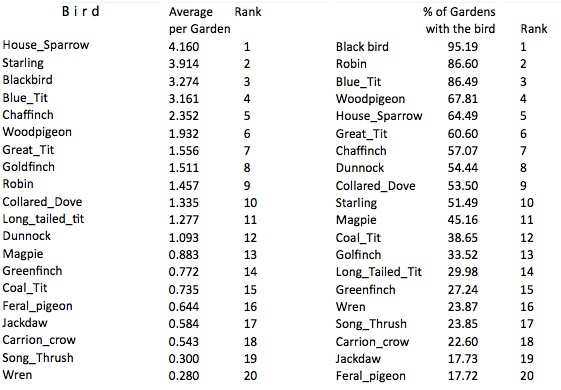Or search by topic
Number and algebra
Geometry and measure
Probability and statistics
Working mathematically
Advanced mathematics
For younger learners
Birdwatch



Every year, the Royal Society for the Protection of Birds (RSPB) asks people to do a survey of the birds seen in their gardens. In 2011, over half a million people took part and you see some of the results the RSPB received in the two tables below:

The first column of both tables shows the names of the birds. The second column of the left-hand table shows the average numbers of those birds across all the gardens. The second column of the right-hand table shows the percentage of all the gardens in which those birds were identified.
You may need to have a chat with others to get a clear picture of the meanings of "average per garden' and "percentage of gardens with the bird".
Have a general look at both tables. What can you say about them?
What can you can about the ranking of the starling?
What can you say about the ranking of the robin?
You may also like
Class 5's Names
Class 5 were looking at the first letter of each of their names. They created different charts to show this information. Can you work out which member of the class was away on that day?

